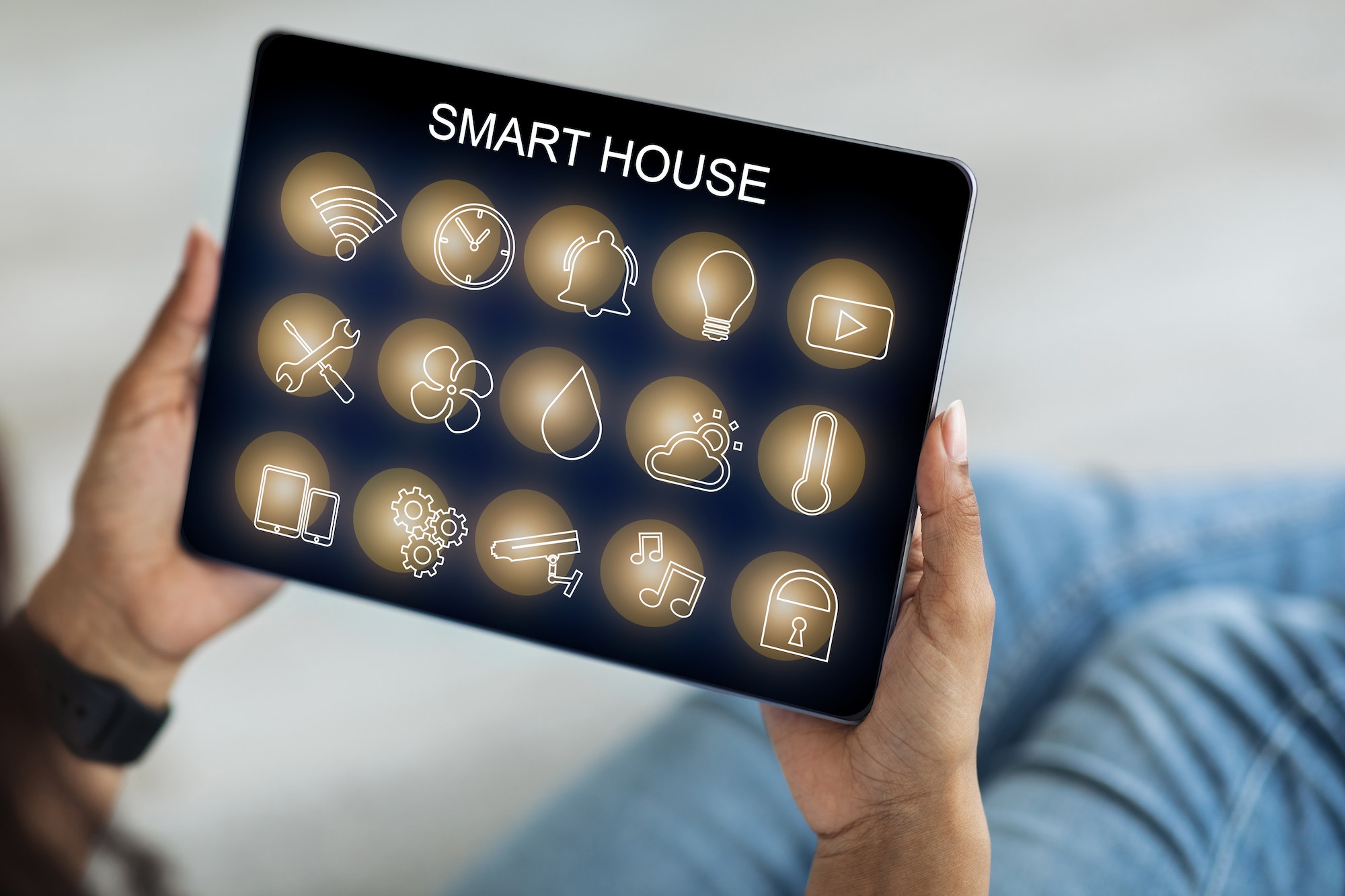In today’s world, environmental concerns are at the forefront of our minds. Climate change, dwindling resources, and a growing population have led to a greater demand for sustainable living practices. One way to embrace this change and make a significant impact is by transforming your home into an eco-friendly and energy-efficient habitat.
Green renovation is not just about updating your property with the latest materials and technologies; it’s about creating a harmonious balance between your home and the environment. In this article, we will explore various aspects of green renovation, including sustainable materials, energy-efficient design, water conservation, solar power, and the long-term benefits of undertaking such a project.
- 1 🌿Sustainable Materials: Choosing Eco-Friendly Alternatives
- 2 🔋Energy-Efficient Design: Maximizing Your Home’s Performance
- 3 💧Water Conservation: Reducing Your Home’s Water Footprint
- 4 ☀️Solar Power: Harnessing the Sun’s Energy
- 5 🪚Long-Term Benefits of Green Renovation
- 6 🚰Waste Reduction and Recycling: Minimizing Construction Waste
- 7 🍃Green Roofs and Walls: Bringing Nature into Your Home
- 8 🌎Embracing a Green Future
🌿Sustainable Materials: Choosing Eco-Friendly Alternatives
The first step in a green renovation project is selecting sustainable materials that are both environmentally friendly and durable. These materials should have a low impact on the environment, be made from renewable resources, and contribute to a healthy indoor environment. Some popular sustainable materials to consider for your renovation project include:
- Reclaimed wood: Reclaimed wood is repurposed wood from old structures, such as barns, factories, and warehouses. By using reclaimed wood, you can reduce the demand for new wood products, thereby conserving forests and reducing the carbon footprint of your home.
- Bamboo: Bamboo is a rapidly renewable resource that can be harvested every 3-5 years. It is an excellent alternative to traditional wood, as it is stronger and more durable. Moreover, it is resistant to moisture and insects, making it an ideal material for flooring, cabinetry, and other furnishings.
- Recycled metal: Recycled metal, such as steel and aluminum, can be used for framing, roofing, and other structural components of your home. By using recycled metal, you help reduce the energy and resources needed to produce new metal products.
- Straw bale: Straw bale is an affordable and eco-friendly insulation material made from waste straw. It provides excellent thermal and sound insulation, making it an ideal choice for walls and roofs.
- Natural fiber carpets: Natural fiber carpets, such as those made from wool or sisal, are biodegradable and free from toxic chemicals, making them a healthier choice for your home.
By incorporating sustainable materials into your renovation project, you can significantly reduce the environmental impact of your home and increase its overall value.
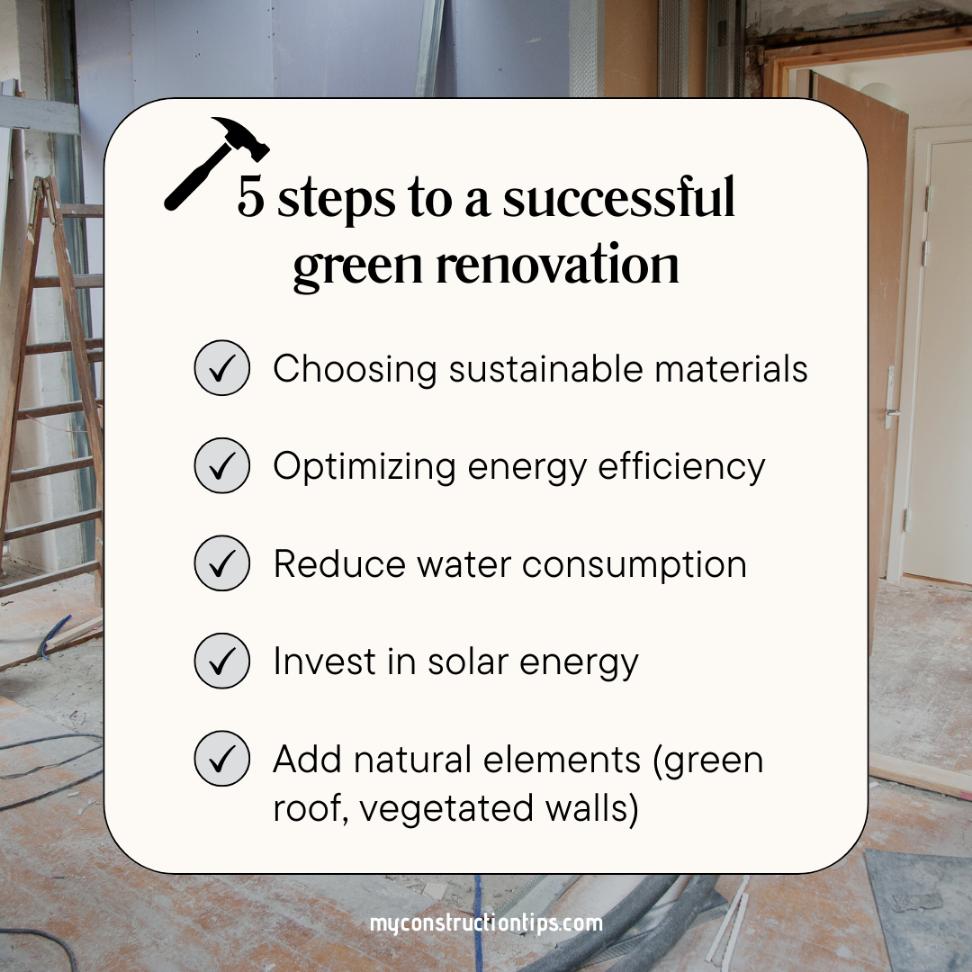
5 essential steps to renovate your home with eco-friendly materials
🔋Energy-Efficient Design: Maximizing Your Home’s Performance
An essential aspect of green renovation is creating an energy-efficient design that optimizes your home’s performance. This can be achieved by focusing on the following elements:
- Insulation: Proper insulation is critical for reducing heat loss in the winter and heat gain in the summer. Ensure that your home has adequate insulation in the walls, roof, and floors to maintain a consistent indoor temperature and minimize energy consumption.
- Windows and doors: Energy-efficient windows and doors can help reduce heat transfer, improving your home’s thermal performance. Look for double or triple-pane windows with low-emissivity (Low-E) coatings and well-sealed, energy-efficient doors.
- Heating and cooling systems: An energy-efficient heating and cooling system will not only reduce your energy bills but also minimize your home’s carbon footprint. Consider installing a high-efficiency furnace, heat pump, or geothermal system for optimal performance.
- Smart home technology: Integrating smart home technology, such as programmable thermostats and energy-efficient lighting, can help you better manage your home’s energy consumption and reduce your overall energy costs.
By incorporating energy-efficient design elements into your renovation project, you can create a comfortable living environment while minimizing your home’s impact on the environment.
💧Water Conservation: Reducing Your Home’s Water Footprint
Water conservation is another crucial aspect of green renovation. By implementing water-saving measures in your home, you can reduce your water usage and contribute to the overall conservation of this precious resource. Some effective water conservation strategies include:
- Low-flow fixtures: Installing low-flow faucets, showerheads, and toilets can significantly reduce your home’s water consumption. Look for fixtures with the WaterSense label, which indicates that they meet EPA standards for water efficiency.
- Rainwater harvesting: Collecting and storing rainwater for use in landscaping or other non-potable applications can help reduce your reliance on municipal water and lower your water bill. Consider installing a rain barrel or a more extensive rainwater harvesting system as part of your renovation project.
- Greywater recycling: Greywater is the wastewater generated from activities like bathing, laundry, and dishwashing. By installing a greywater recycling system, you can reuse this water for irrigation, flushing toilets, or other non-potable purposes, reducing your home’s overall water usage.
- Native landscaping: Choosing native plants for your landscaping can help conserve water, as they are adapted to the local climate and typically require less water than non-native species. Replacing traditional lawns with native grasses or ground covers can also help reduce water consumption.
By implementing water conservation measures during your renovation, you can create a more sustainable home and contribute to the global effort to conserve our planet’s finite water resources.
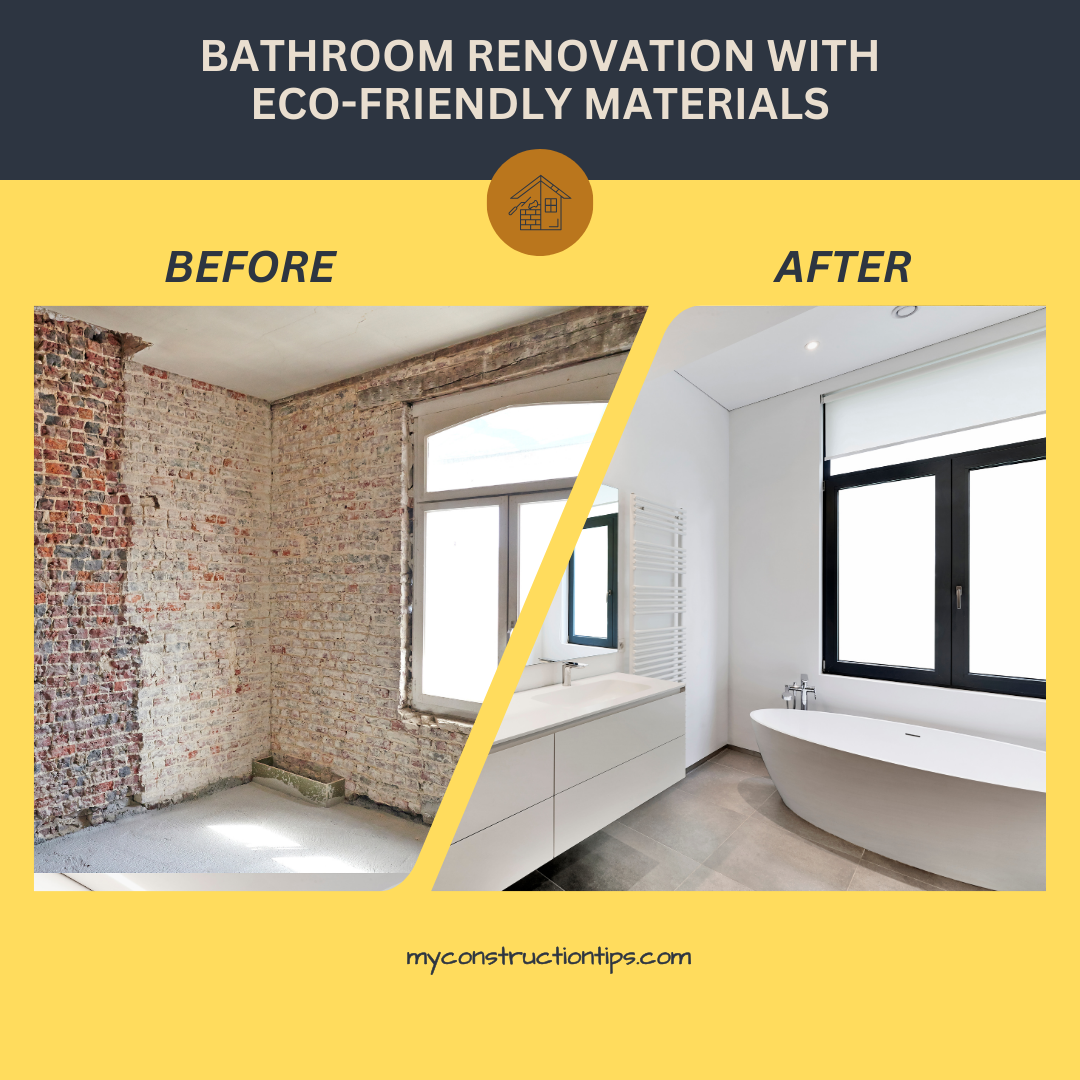
Before/After
☀️Solar Power: Harnessing the Sun’s Energy
Solar power is an increasingly popular way to generate clean, renewable energy in your home. By installing solar panels on your roof or property, you can harness the sun’s energy, reduce your home’s reliance on fossil fuels, and potentially save on your energy bills.
There are several factors to consider when incorporating solar power into your renovation project:
- Solar panel type: There are various types of solar panels available, each with its advantages and disadvantages. Monocrystalline and polycrystalline panels are the most common, offering high efficiency and durability. Thin-film panels are lightweight and flexible but generally less efficient.
- System size: The size of your solar system will depend on your energy needs, available roof or property space, and budget. A professional solar installer can help you determine the optimal system size for your home.
- Incentives and financing: Many federal, state, and local incentives are available to help offset the cost of solar installations, such as tax credits, rebates, and grants. Additionally, solar financing options, such as solar loans or power purchase agreements (PPAs), can make solar more affordable for homeowners.
By investing in solar power during your renovation, you can reduce your home’s carbon footprint and contribute to the global transition towards clean, renewable energy sources.
🪚Long-Term Benefits of Green Renovation
While undertaking a green renovation project may require a higher initial investment, the long-term benefits are well worth the cost. Some of these benefits include:
- Reduced energy bills: By improving your home’s energy efficiency through insulation, windows, heating and cooling systems, and solar power, you can significantly reduce your monthly energy bills.
- Healthier living environment: Sustainable materials and enhanced indoor air quality contribute to a healthier living environment for you and your family.
- Increased property value: Eco-friendly homes are in high demand, and incorporating green features into your renovation can increase your property’s overall value.
- Environmental stewardship: By embracing green renovation practices, you play a part in preserving the environment for future generations.
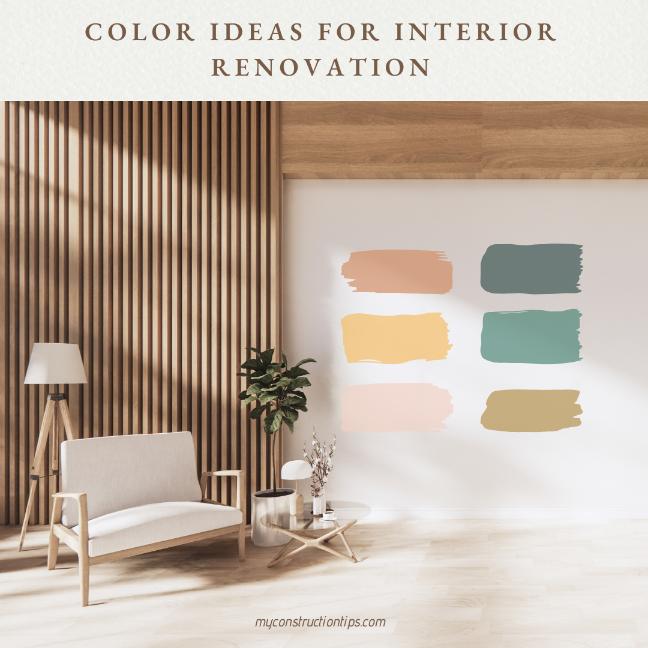
Color ideas for interior renovation
In conclusion, green renovation is an effective way to transform your home into an eco-friendly habitat that benefits both you and the environment. By focusing on sustainable materials, energy-efficient design, water conservation, and solar power, you can create a healthy, comfortable, and sustainable living space that is well-suited for the changing world.
🚰Waste Reduction and Recycling: Minimizing Construction Waste
Waste management is a crucial aspect of any green renovation project. By minimizing construction waste and embracing recycling practices, you can reduce your renovation’s environmental impact and contribute to a circular economy. Some effective waste reduction and recycling strategies include:
- Deconstruction: Rather than demolishing old structures, carefully deconstruct them to salvage and reuse valuable materials, such as wood, metal, and bricks. This practice not only conserves resources but also reduces waste sent to landfills.
- Precycling: Purchase building materials with minimal packaging or choose materials made from recycled content. This practice can help reduce waste production during the renovation process.
- Recycling: Properly recycle any waste generated during your renovation, including metal, wood, cardboard, and plastics. Seek out recycling facilities in your area and adhere to their guidelines to ensure the waste materials are processed correctly.
- Donating: Consider donating any unwanted fixtures, appliances, or materials to local organizations, such as Habitat for Humanity, to extend their usable life and support community projects.
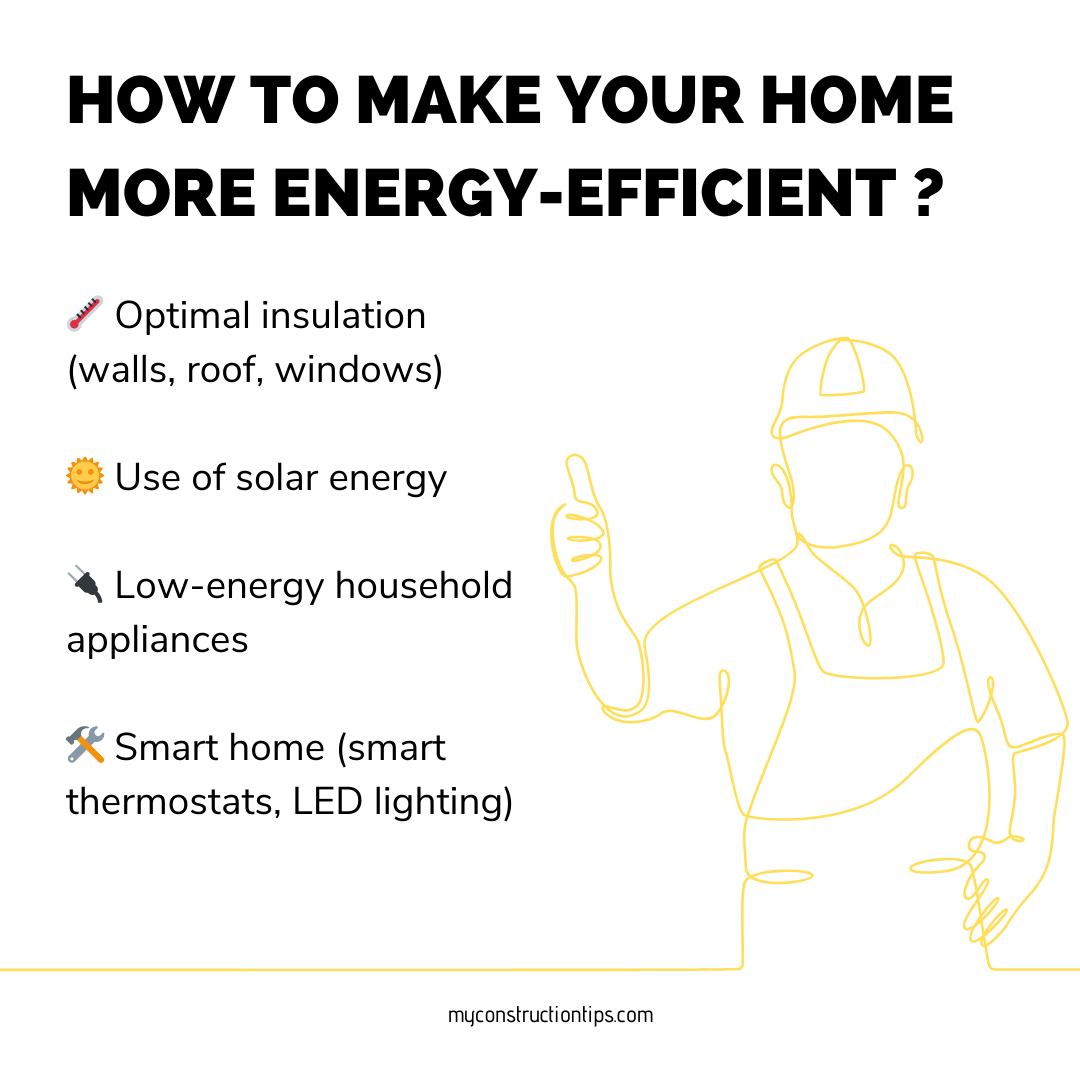
How to make your home more energy-efficient ?
By incorporating waste reduction and recycling strategies into your green renovation project, you can help minimize your environmental impact and contribute to a more sustainable future.
🍃Green Roofs and Walls: Bringing Nature into Your Home
Green roofs and walls are innovative features that can help merge your home with its natural surroundings while offering numerous environmental benefits. These living structures consist of plants grown on the roof or walls of your home, providing insulation, improving air quality, and enhancing biodiversity. Some aspects to consider when incorporating green roofs or walls into your renovation project include:
- Green roof types: There are three main types of green roofs: extensive, semi-intensive, and intensive. Extensive green roofs are low-maintenance and lightweight, featuring a shallow layer of soil and hardy plant species. Semi-intensive and intensive green roofs require more maintenance and support a wider variety of plants, including shrubs and small trees.
- Structural considerations: Before installing a green roof or wall, consult with a structural engineer to ensure your home can support the additional weight and moisture. Additional waterproofing and insulation may be necessary.
- Plant selection: Choose native plant species that are adapted to your local climate and require minimal maintenance. This will help ensure the success of your green roof or wall and support local ecosystems.
By integrating green roofs and walls into your renovation project, you can create a unique, eco-friendly home that seamlessly blends with its environment.
🌎Embracing a Green Future
Green renovation is a powerful way to transform your home into an eco-friendly and energy-efficient habitat that benefits both you and the environment. By focusing on sustainable materials, energy-efficient design, water conservation, solar power, waste reduction, and innovative features like green roofs, you can create a healthy, comfortable, and sustainable living space that is well-suited for the changing world.
By embracing green renovation practices, you not only improve your quality of life but also contribute to a more sustainable future for generations to come. So, as you plan your next home renovation, consider incorporating eco-friendly elements to create a living space that truly reflects your values and commitment to the environment.

